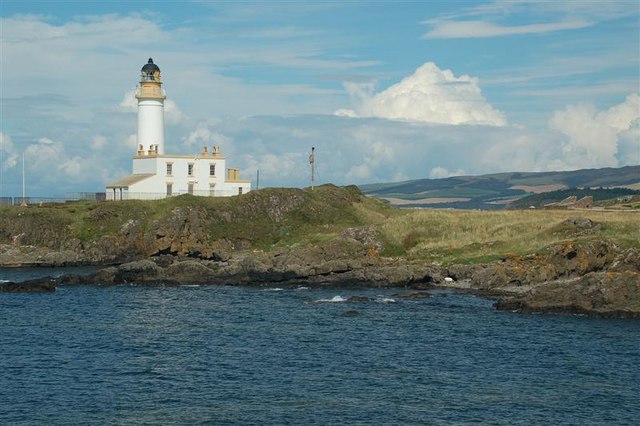The Mull of Galloway is not only the most southerly point of
the Rhinns Of Galloway, it is also the most southerly place in Scotland. Visitors can enjoy extensive views of the Solway Firth and even the Isle Of Man. When I was in Peel recently on a visit to the
Isle Of Man I could make out what I was pretty
sure was the southern end of the Rhinns Of Galloway. As befits such a geographical distinction, it
has a suitably handsome, whitewashed lighthouse, known as Stevenson Tower,
since it was built by the prolific builder of lighthouses, Robert
Stevenson. The lighthouse, which is 26
metres high, came into operation in 1830.
It is open to visitors, who can visit an exhibition in the Engine Room
and, when open, can access the tower. Aside
from lighthouse enthusiasts, the Mull Of Galloway is a magnet for birdwatchers,
being an RSPB site. Gullemots,
kittiwakes, peregrine falcons, puffins and gannets are the species to watch out
for, and in summer they are joined by basking butterflies.
While the Mull Of Galloway is the most southerly point in Scotland, the village of Drummore
is the most southerly Scottish village. The
harbour started out in the 1800s as a point of departure for the locally
produced lime, and for imported coal, but it later turned to defence use when
the Ministry of Defence took it over with the establishment of West Freugh and Luce Bay
bombing ranges. RAF West Freugh was an
armament training camp just before World War II but after war broke out the training activities were expanded, including the use of a bombing range. The MOD have since moved out, leaving the
harbour to more pleasurable pursuits.
Drummore is a popular small resort, thanks in part to the nice sandy
beach in Drummore
Bay. Out at sea there are a number of small rocky
islands called The Scars which are managed by the RSPB and host colonies of
gannets during the breeding season.
Map of the area.
 | |
|
Mull of Galloway lighthouse - geograph.org.uk - 592045. Photo by Derek Ball, via Wikimedia Commons
|









